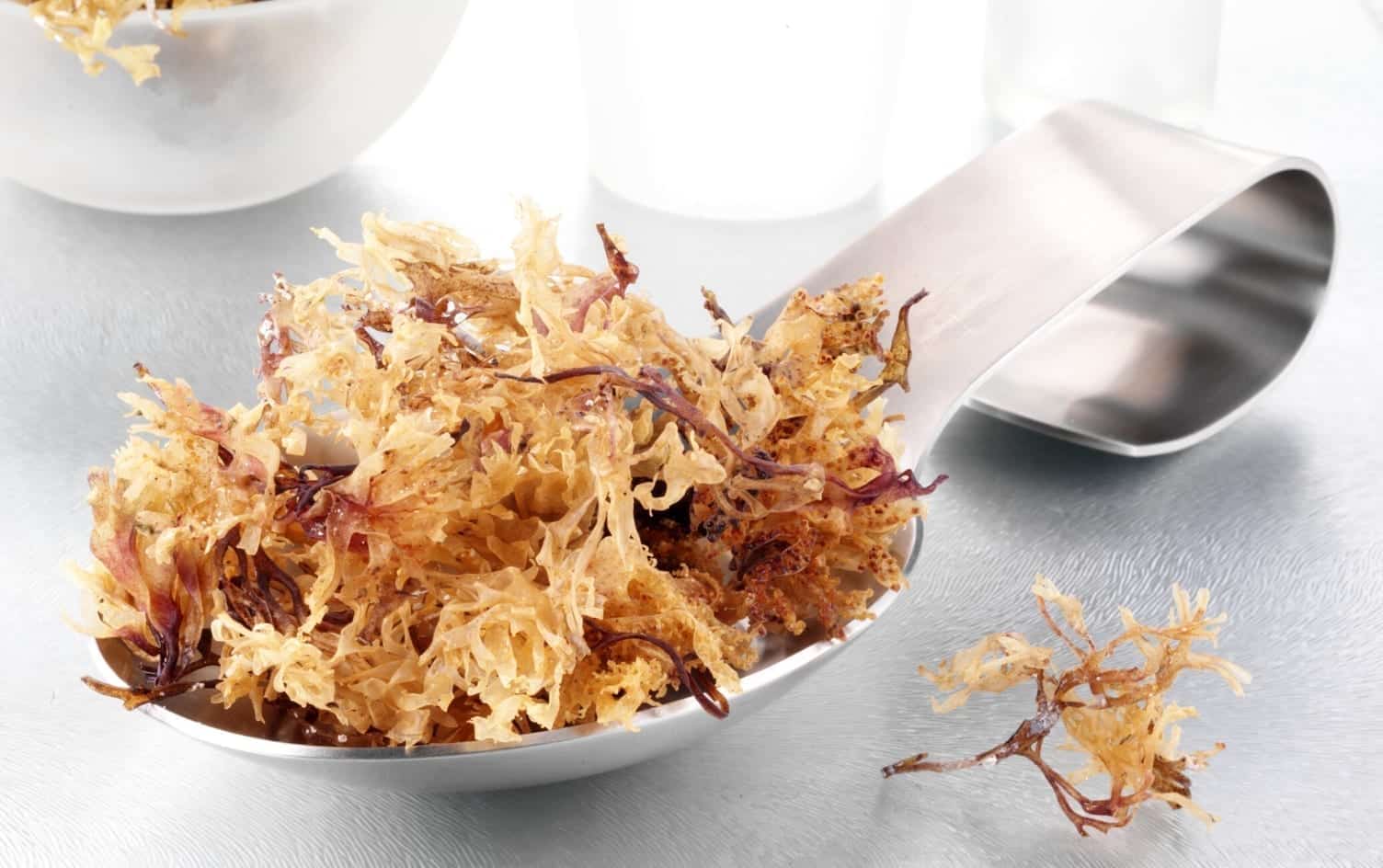Seaweed has been a dietary staple in certain seaside countries for centuries. More recently, it’s come into the spotlight stateside as a nutritional powerhouse — it’s loaded with fiber, omega-3 fatty acids, vitamins and phytonutrients. Seaweed comes in many varieties, with perhaps the most ubiquitous being nori, the tasty, paper-thin sheets that join together maki sushi rolls and hand rolls.
One variety that’s less common but is currently finding its way into more foods and drinks is sea moss. Which begs the question:
WHAT IS SEA MOSS?
Sea moss, which also goes by the colloquial name Irish moss and the scientific name Chondrus crispus, is a type of red algae seaweed that predominantly grows along the northern Atlantic coasts of the United States and Europe. It’s often used to make carrageenan, a common thickening agent in nut milks, yogurt and soup. But it can also be consumed by itself, sometimes soaked to soften it, other times dried or powdered. In Ireland and Scotland, sea moss is used to make a sweetened milk-based drink, and others add it to smoothies for a quick nutritional punch.
POTENTIAL HEALTH BENEFITS OF SEA MOSS
“This variety of seaweed is particularly rich in minerals and antioxidants,” says Amy Goodson, MS, RD. “It can help stimulate healthy digestion and relieve the symptoms of cold and flu.” She also notes that sea moss is a good source of potassium chloride, a nutrient which helps to dissolve inflammation and phlegm in the mucous membranes, which can cause congestion. It’s also high in iron, zinc and magnesium.
One promising Canadian study showed sea moss could play a neuroprotective role in preventing Parkinson’s disease. The authors found that, apart from its application as a functional food, Chondrus crispus may be used as an anti-neurodegenerative drug inhumans.
According to the 2017 book “Nutrition and Functional Foods for Healthy Aging,” sea moss encourages cell growth and metabolism and protects the skin. More specifically, “it releases arginine and citrulline, amino acids that are important sources of nitrogen and essential for protein and collagen synthesis.” This one-two punch acts as a skin protector against harsh weather and pollution, and may also assist with wound healing.
Another study looked at the prebiotic effects of supplementing a diet with sea moss, finding it can positively influence gut microbial communities, overall gut health and the immune system.
Anecdotally, consumers and natural health food companies claim sea moss can increase energy and boost mental clarity. However, Goodson points out that research on sea moss is relatively lacking, especially compared to other more popular seaweeds, so it’s best to take a few of the purported claims with a grain of salt — at least for now.
HOW TO ADD SEA MOSS TO YOUR DIET
If you want to bring some sea moss into your life, it’s easy enough to find online and at health food stores. When packaged, it typically comes in powdered form, which makes it a convenient addition to foods and drinks. Or blend it with water or milk for a traditional Irish tea.
If you’d like to start with the raw ingredient, you just need to give it a little extra attention. “The first step is to soak it,” says Goodson. “It will become a gelatin-like substance that can then be used in smoothies and soups.” Try it for yourself, and you’ll quickly fortify your diet with an extra dash of vitamins and minerals.




